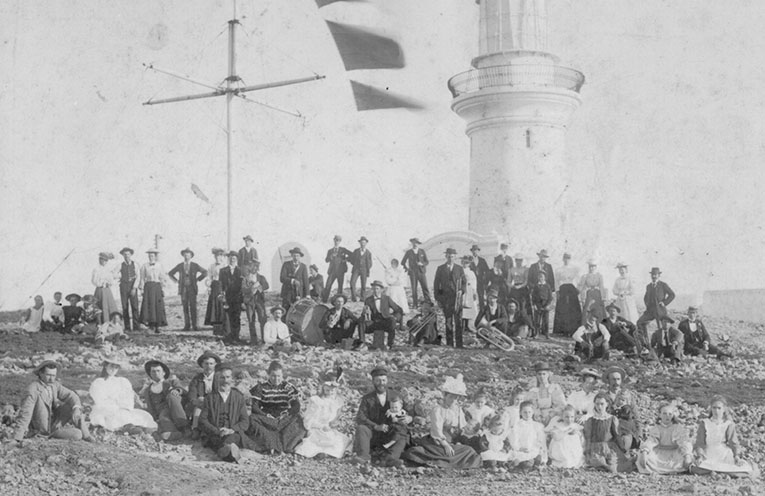
ONE of the first indications to the general public that the lighthouse had been completed was a newspaper notification that the temporary light, used since 13 August 1878, was to cease operating and the permanent light displayed from 13 March 1880.
After the permanent light was established, the remaining workmen left the island over the following weeks.
The head lighthouse keeper Captain Joseph Leddra, along with the first and second assistants, Mr John Skelton and Mr John Burgess and their families, moved into their quarters on 1 March 1880.
The head keeper’s residence contained six rooms surrounded by a seven-foot verandah, while the assistant’s quarters were constructed as a semi-detached house, also surrounded by a verandah, each residence containing four rooms.
Accompanying these buildings was a shelter wall to help protect the inhabitants from the weather, two footpaths, a landing stage and crane, and storehouse.
The lighthouse tower is 40 feet high and has an internal diameter of 11 feet to allow for three flights of cast iron stairs.
The lantern added another 17 feet and 6 inches to the height of the tower and was made by Messrs Chance Brothers and Co in Birmingham, England.
Described as being one of the finest made, the light was shipped from England and was accompanied by a company representative to assist with its installation.
Around 2,850 casks of cement, 1,100 tons of sand from the Macleay River area and stone from the island was used for the site’s concrete components.
The gallery floor is made of 16 Melbourne bluestones, each weighing 30 cwt (around 1 ½ ton), while the specially selected hardwood came from the Bellingen River.
The tendered cost of construction was £23,900 with an additional £3,150 for the lantern and £1,500 for the landing stage and footpaths.
By Karen FILEWOOD
